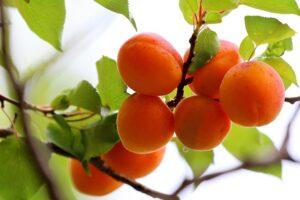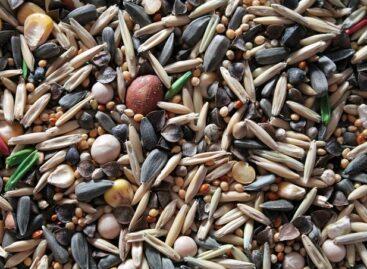This year, a not abundant but satisfactory apricot harvest is expected in Hungary
Apricots were a fruit with a good export position in the past, before 2018 we exported 4-5 thousand tons annually. In recent years, however, due to the unpredictable harvest and commodity base, the amount of export decreased to 1-2 thousand tons, while the import increased, reaching 1-2 thousand tons per year.

(Photo: Pixabay)
The FruitVeb article reveals that the area under cultivation of domestic apricots increased dynamically between 2013 and 2020, from 4,000 hectares to 5,700 hectares. It has decreased in recent years due to frost damage, and currently occupies about 5,000 hectares. The most important growing districts include Pest and Bács-Kiskun counties, Borsod-Abaúj-Zemplén counties, Somogy and Tolna counties, and Fejér county. Before 2018, the domestic apricot crop ranged between 20 and 35 thousand tons, depending on the vintage. Since then, due to frequent spring frost damage, crop security has significantly deteriorated, yields have become unpredictable, and the risk of production has increased. In bad vintages, such as 2018, 2020, 2021 and 2023, only 6-8 thousand tons of apricots were harvested, while in good vintages, such as 2019 and 2022, the harvest exceeded 20 thousand tons.
After last year’s weak crop load and good rainfall conditions, very good flowering was experienced this year
Due to the mild winter and early spring, flowering started three weeks earlier than usual. By the middle of March, apricots were blooming practically all over the country, under favorable weather conditions, which resulted in good pollination and fertility. However, in the second half of March and in the middle of April, frosts arrived in several waves, which damaged the crop to varying degrees. We can expect to harvest 16,000-18,000 tons of apricots this year, which in the best case could reach 20,000 tons, but in the worst case it could remain below 15,000 tons. Actual yield is primarily a function of the weather over the next two months, including rainfall and temperature conditions, as well as ice damage. In Transdanubia, apricots were spared more by the frosts, while in the central and northern parts of the country, there is a significant crop loss. From mid-March, the dry weather worsened the fruit setting and, due to the smaller fruit size, can reduce the harvestable quantities. The key to successful apricot cultivation is good site selection, active frost protection, and high-quality and intensive cultivation technology. In such plantations, the harvest is usually good and the fruit size and quality are excellent. This year, we can expect a long, protracted apricot season, without significant quality problems, although frostbites and plant protection problems may occur locally.
FruitWeb
Related news
Farmers protesting against the EU-Mercosur agreement block several highways in Belgium
🎧 Hallgasd a cikket: Lejátszás Szünet Folytatás Leállítás Nyelv: Auto…
Read more >Innovative seed treatment solution being developed at the University of Szeged
🎧 Hallgasd a cikket: Lejátszás Szünet Folytatás Leállítás Nyelv: Auto…
Read more >Thousands of farmers protest in Warsaw against Mercosur agreement
🎧 Hallgasd a cikket: Lejátszás Szünet Folytatás Leállítás Nyelv: Auto…
Read more >Related news
Farmers protesting against the EU-Mercosur agreement block several highways in Belgium
🎧 Hallgasd a cikket: Lejátszás Szünet Folytatás Leállítás Nyelv: Auto…
Read more >Innovative seed treatment solution being developed at the University of Szeged
🎧 Hallgasd a cikket: Lejátszás Szünet Folytatás Leállítás Nyelv: Auto…
Read more >Thousands of farmers protest in Warsaw against Mercosur agreement
🎧 Hallgasd a cikket: Lejátszás Szünet Folytatás Leállítás Nyelv: Auto…
Read more >



